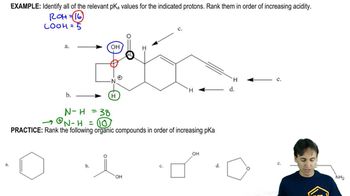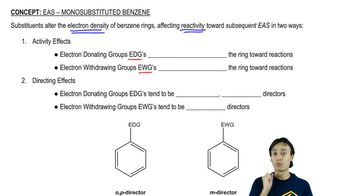For the following molecules, give the chemical shift for each indicated hydrogen.
(d)
 Verified step by step guidance
Verified step by step guidance Verified video answer for a similar problem:
Verified video answer for a similar problem:



 11:44m
11:44mMaster 1H NMR Chemical Shifts with a bite sized video explanation from Johnny
Start learning